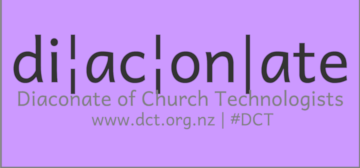If you’re wondering how to improve church website SEO without technical skills, you’re not alone. Many mainline churches face similar challenges, especially when resources and tech knowledge are limited. For church members managing website updates, small adjustments can make a noticeable difference in how well the site ranks on search engines.
Here, I’ll walk you through straightforward actions that can be done by anyone on the parish team, plus some technical actions that may require support. These steps focus on improving your church website SEO without technical skills, making the process accessible for all levels.
Tips for Improving Church Website SEO Without Technical Skills
Parish Team Tasks
These actions are perfect for church team members, even those who don’t have a tech background. They don’t require complex knowledge, but implementing them will enhance the church website’s visibility and local relevance.
- Claim and Manage Your Google Business Profile
One of the best ways to boost local SEO is by ensuring your church has a verified Google Business Profile. This profile helps local visitors find the church more easily when they search online.
To make the most of it:- Ensure all contact details are correct and current, including the address, phone number, and opening hours.
- Use high-quality images of the church, activities, and events.
- Encourage congregation members to leave positive reviews on Google. Reviews help build trust and influence your search ranking, especially in local results.
- Ensure NAP Consistency Across Directories
Consistent NAP (Name, Address, Phone) details are vital. Check that the parish’s information matches exactly across all online directories, like Yellow Pages and other local listings. This consistency helps search engines trust the site’s information, which boosts local rankings. - Content Updates for Events and News
Regular content updates help improve church website SEO without technical skills, as search engines favour active sites with fresh content. Even if regular content isn’t your preferred style, consider trialling this strategy for a few months to see the impact. Two easy ways to keep content current are:- Event Pages: Ensure event pages are regularly updated with accurate dates, times, and descriptions to attract local traffic and highlight the church’s role in the community.
- Blog or News Updates: If your church has a blog or news page, post short updates on church activities or reflections on faith. Aim for 300–500 words to keep things manageable, and include phrases like “Auckland Methodist Church” to improve local relevance.
- Social Media Sharing and Local Backlinking
Social media shares and local backlinks are effective, easy ways to increase a site’s authority:- Social Media Sharing: Share new blog posts, event pages, or announcements on social platforms to improve visibility. Each share boosts the chances of others linking back to the website, which is a major SEO benefit.
- Local Backlinks: Contact local organisations (like community centres and charities) and ask if they’d be willing to add a link to your website. Local backlinks strengthen your church website’s credibility and authority, helping it rank higher.
- Local Keywords in Main Pages
For main pages, adding phrases that reflect your church’s location (such as “Methodist Church Timbuctoo” or “Timbuctoo worship services”) can help you improve church website SEO without technical skills. These local keywords improve your visibility in local search results, so try incorporating them naturally on main pages like the home page or about page.
Technical Actions
(For a Web Specialist to Handle)
These back-end tasks may require some technical expertise but offer significant SEO advantages.
- Double-Check Mobile Friendliness and SSL
Mobile-friendliness and site security (SSL) are two critical aspects for SEO. If both were set up initially, ask a specialist to verify that they are still correctly configured to support smooth, secure access across all devices. - Improve Page Load Speed
A slow website can hurt SEO and frustrate visitors. To increase speed, consider compressing images, implementing lazy loading, and minifying CSS, JavaScript, and HTML. Using a Content Delivery Network (CDN) can also help speed up the site for users. - Add Schema Markup
Schema markup, also known as structured data, helps search engines categorise site content. Adding schema specific to church-related terms (like LocalBusiness or Event schema) helps search engines display relevant information from your site in search results. - Set Up Google Search Console
Google Search Console allows you to monitor the website’s performance, such as indexing status and page errors. Keeping track of these issues ensures your site is running smoothly and helps resolve any potential problems that could impact SEO. - Optimise Titles, Headings, and Internal Links
Titles, headings, and internal links signal to search engines what each page is about. Ensuring each page has a unique title tag and meta description, alongside relevant H1, H2, and H3 headings, will help search engines better understand your site content and improve SEO rankings.
Final Tips on How to Improve Church Website SEO Without Technical Skills
Knowing how to improve church website SEO without technical skills is a huge advantage—by following these simple steps, your church can boost visibility without needing a tech expert. Consistent, small changes can make a big impact over time, helping your church reach a broader audience and connect more meaningfully with your community.





